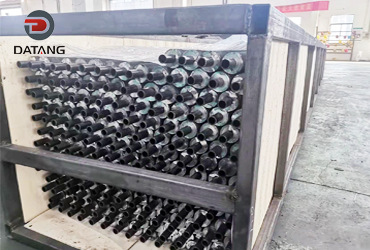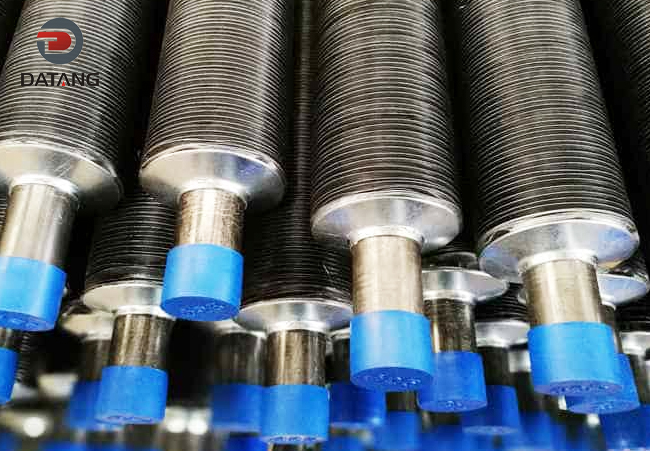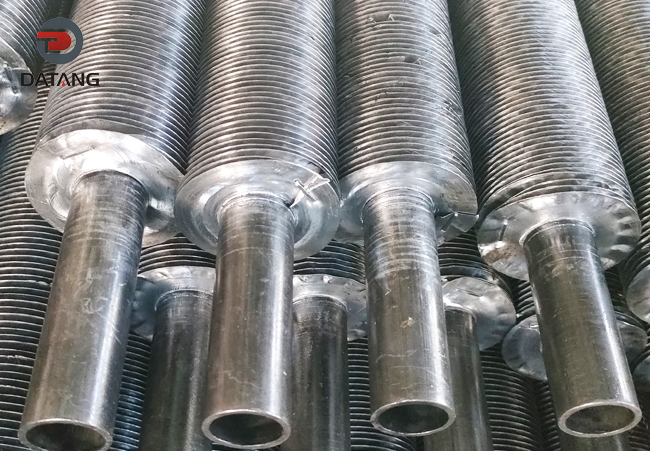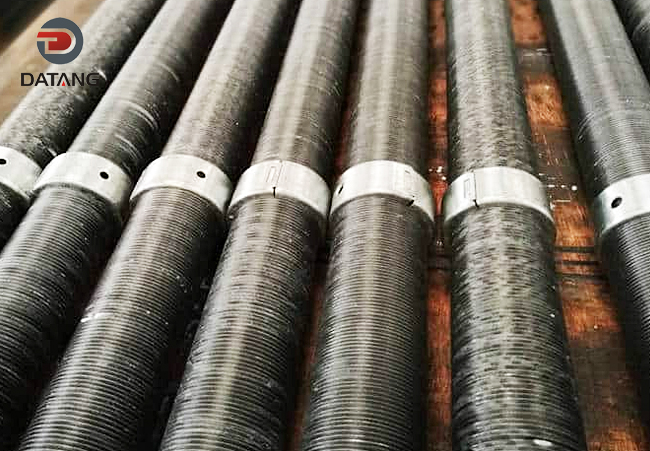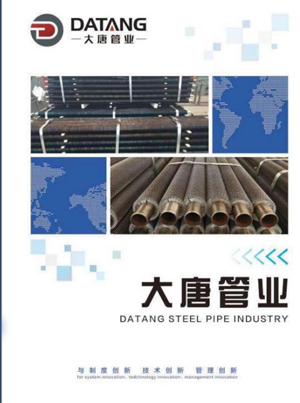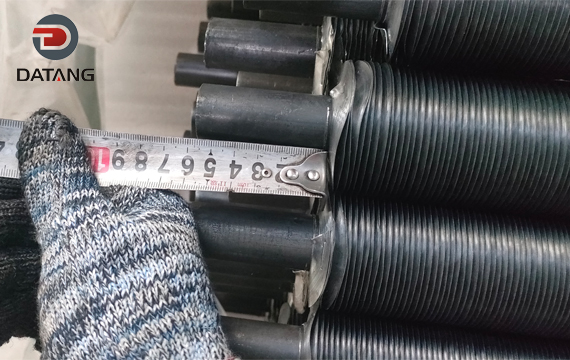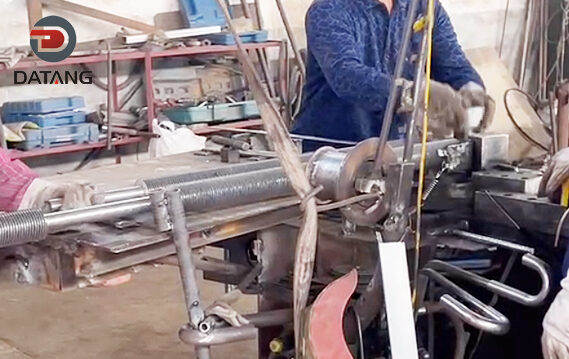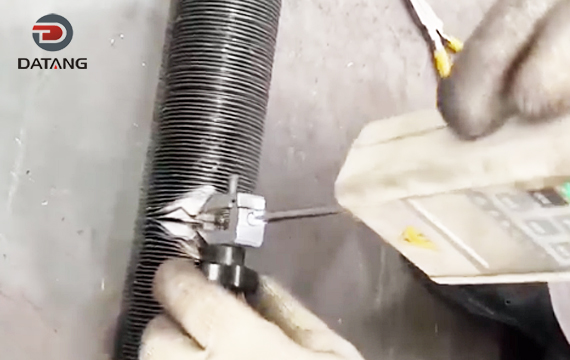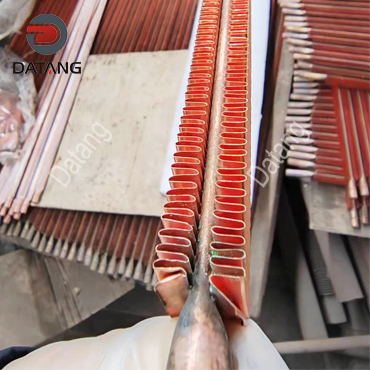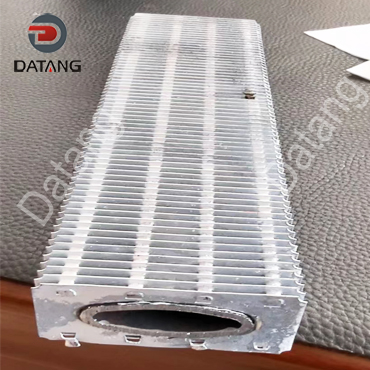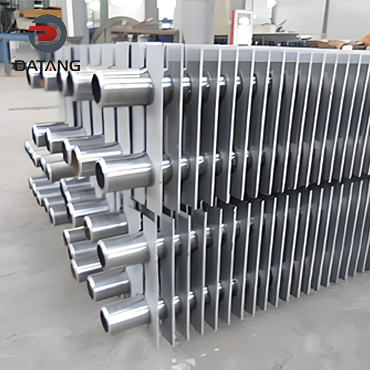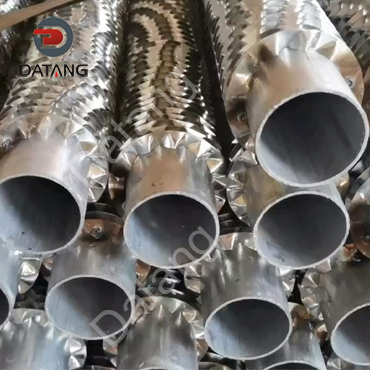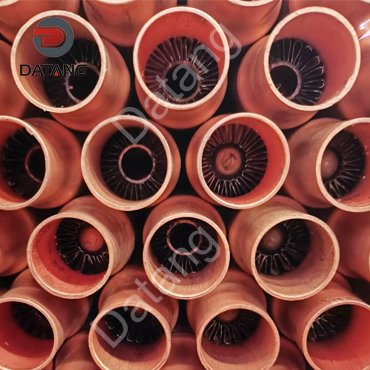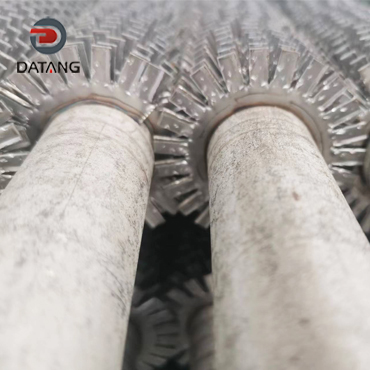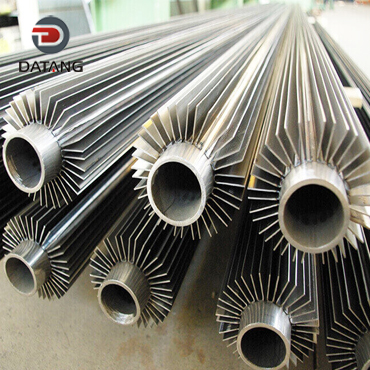CS A179 Embedded Aluminium Fins
The CS A179 embedded aluminium fins is a high-efficiency heat exchange element. Its core structure consists of a base tube and aluminum fins bonded together through a special process.
- Tube Material:Carbon steel,Stainless steel,Tube Diameter:15.88-50.80 mm,Wall Thickness:1.0-3.0 mm
- Fin Material:Aluminum,Cooper,Fin Thickness:0.4-0.5 mm,Fin Pitch:2.1-6.0 mm,Fin Height:6.35-25.4 mm
CS A179 Embedded Aluminum Fins for Air Cooled Heat Exchangers
CS A179 Embedded Aluminum Fins is a type of G type finned tube,it is an enhanced heat transfer element in which metal fins are machined tightly into the outer wall of a base pipe. Their core feature is the spirally wound fins, creating a continuous flow channel.
CS A179 Embedded Aluminum Fins Structure
1. Base Tube: Mostly carbon steel, stainless steel, or copper tube, with a diameter ranging from 20-150mm and a pressure resistance of up to 10MPa;
2. Fins: Commonly made of aluminum, copper, or steel strip, with a thickness of 0.2-1.5mm and a fin height of 5-20mm;
3. Embedding Process: The fin roots are embedded into the grooves on the base tube surface through rolling or cold rolling, with a bonding strength of ≥15MPa.
Carbon Steel Embedded Aluminum Fin Models and Specifications
Carbon Steel Embedded Aluminum Fin models and specifications are primarily categorized by base tube material, fin parameters, and process standards. Common models and technical parameters are listed below:
1. Base Tube Material and Standards
Carbon Steel Base Tube
ASTM A192/A192M: Seamless carbon steel tube for high-pressure boilers, with a pressure resistance of 1.6-2.5MPa, suitable for steam systems
ASTM A210/A210M: Medium carbon steel boiler tube, temperature resistance ≤ 120°C, suitable for hot water systems.
Q235B/20# seamless steel tube: For general industrial heating applications, cost-effective, with a pressure resistance of 0.8-2.0 MPa.
Composite pipe specifications
Outer diameter range: 15-57 mm (e.g., 25.4 × 2.77 mm, 32 × 3 mm, etc.)
Wall thickness: 1.5-4 mm, customized according to pressure requirements.
2. Fin parameters
Fin type
Embedded corrugated fins: Mechanically rolled into the base tube grooves, with a contact thermal resistance of ≤ 0.0005 m²·K/W.
Spiral wound fins: Aluminum strip wound and then rolled, increasing the heat dissipation area by 4-6 times.
Key dimensions
Fin height: 5-25 mm (e.g., 10 mm, 15 mm, etc.)
Fin pitch: 3-20 mm (e.g., 3mm, 5mm, etc.), affecting air flow resistance.
Heating area per unit length: 1.2-2.5 m2/m (depending on fin height and spacing).
3. Process and Model Examples
High-frequency welded finned tubes
Model Example: Model 133 (base tube 25.4 × 2.77 mm, aluminum fins 6 FPI)
Process Features: High-frequency current welding, bond strength ≥ 120 N/cm, suitable for dusty environments.
Three-roll rolled finned tubes
Model Example: 32mm seamless heat dissipation tube (fin height 15mm, 3mm spacing)
Applications: Industrial drying, hot air furnaces, and other high-temperature heat exchange equipment.
4. Customization Options
Non-standard specifications: Supports special-shaped base tubes (e.g., oval tubes) and special fin arrangements (e.g., staggered).
Surface treatment: Available with galvanized or spray-coated for extended service life.
CS A179 Embedded Aluminum Fins Working Principle
The CS A179 Embedded Aluminum Fins are a composite heat exchange element. Its core operating principle is based on the “steel-aluminum synergistic heat transfer” mechanism, achieving efficient heat exchange through the physical connection of a carbon steel base tube and aluminum fins.
1. Heat Medium Transport and Base Tube Heat Transfer
The carbon steel base tube serves as the pressure-bearing element, through which a high-temperature heat medium (such as hot water, steam, or thermal oil) flows. As the heat medium flows, it transfers heat to the carbon steel base tube through the tube wall. The high strength (pressure resistance of 1.6-2.5 MPa) and deformation resistance of carbon steel ensure stable heat medium transport. Furthermore, its inner wall is treated with anti-scaling to reduce thermal resistance.
2. Heat Diffusion of the Aluminum Fins
The aluminum fins are embedded into the surface of the carbon steel base tube by mechanical rolling or welding, creating a close contact. Aluminum’s high thermal conductivity (237 W/(m·K)) allows heat to be quickly transferred from the base tube to the fins. The fins’ large surface area (4-6 times larger than that of bare tubes) allows heat to be dissipated to the surrounding air through radiation or convection.
3. Optimizing Environmental Heat Transfer and Efficiency
The spiral and corrugated design of the aluminum fins enhances air turbulence and improves convective heat transfer efficiency. Customizable fin spacing (3-20mm) and height (5-25mm) accommodate various dusty environments and space requirements.
CS A179 Embedded Aluminum Fins Performance Advantages
1. Enhanced Heat Transfer: Spiral fins improve efficiency through the following methods
– Increases heat transfer area by 3-8 times (compared to plain tubes);
– The spiral structure induces fluid turbulence, resulting in a heat transfer coefficient 2-3 times that of plain tubes;
2. Corrosion and Vibration Resistance: The embedded process eliminates weld heat-affected zones, extending service life to 15-20 years;
3. Low Maintenance: The lack of welds between the fins and the base tube reduces dust accumulation, extending cleaning intervals by 30%.
CS A179 Embedded Aluminum Fins Applications
| Field | Usage Conditions | Advantages |
|---|---|---|
| Power Station Boiler | Flue gas temperature 400-600℃ | High-temperature deformation resistance, 40% heat exchange efficiency improvement |
| Petrochemical Industry | Corrosive media (e.g. H2S) | Stainless steel base pipe + aluminum fin anti-corrosion combination |
| Air Conditioner Condenser | Small temperature difference (5-10℃) | Spiral structure optimizes air-side flow field |
CS A179 Embedded Aluminum Fins Selection Parameters Guide
1. Fin Density: 80-200 fins per meter. A higher density will increase pressure drop.
2. Pitch: Recommended: 15-30mm, which affects the degree of fluid turbulence.
3. Material Compatibility: For applications in the chemical industry, a combination of 316L stainless steel and titanium fins is preferred.
- Datasheet
- Drawing
- Certificates
| Tube Material | Wall Thickness | Tube Diameter | Tube Length |
| All types | From 1.0 to 3.0 mm | 15.88 / 50.80 mm | Max. 18500 mm |
| 0.039 in to 0.118 in | 0.625 / 2 in | 728 in | |
| Fin Strip Material | Fin Strip Thickness | Fin Pitch | Production Capacity |
| Aluminum/Copper | From 0.4 to 0.5 mm | From 2.1 to 3.0 mm | 12000 m per day |
| From 0.015 to 0.019 in | From 8 to 11 fins/inch |
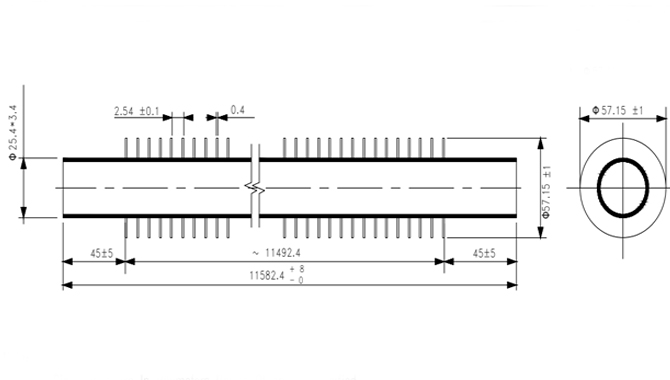
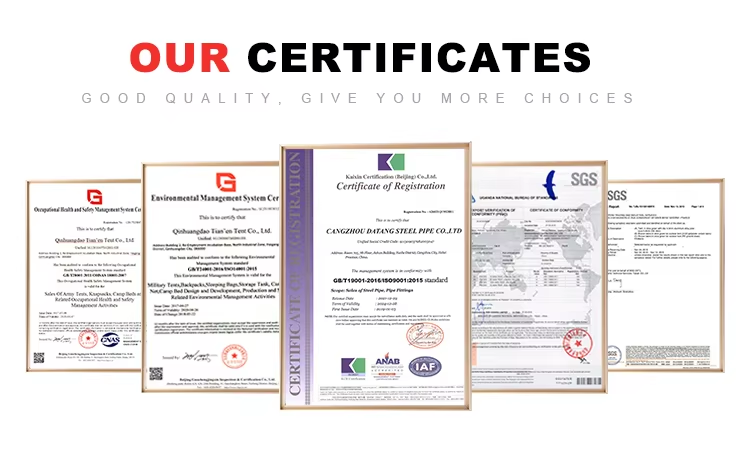
CS A179 Embedded Aluminium Fins Appearance Dimension Inspection
CS A179 Embedded Aluminium Fins appearance dimension inspection is one of the important links to ensure the quality and performance of fin tubes.
The inspection items mainly include fin height, fin spacing, fin thickness, base tube wall thickness and outer diameter, etc.
Datang CS A179 Embedded Aluminium Fins Bending Processing
Bending of fin tubes is an important step in the production process of CS A179 embedded aluminium fins. Bending is to bend the embedded fin tube material through specific mechanical equipment to form a suitable curvature to meet different usage requirements.
This step requires strict control of the bending angle and curvature to ensure the fit between the fin and the base tube and the heat dissipation effect.
CS A179 Embedded Aluminium Fins Pull Off Test
CS A179 embedded aluminium fins pull-off test is a test used to detect whether the fin tube will fall off when subjected to tension, mainly used to ensure the quality and reliability of the fin tube.
Datang’s this test is very important in the production process because the g type finned tubes will be subjected to various stresses during operation, such as temperature changes and pipe expansion, which may cause the fin to fall off, thereby affecting the performance and safety of the heat exchanger .
CS A179 Embedded Aluminum Fins Packaging
Payment Terms:T/T, LC
Delivery: 15-30 days after payment
Marking: Standard + Steel Grade + Size + Heat No + Lot No
Package: Iron frame packing boxes and the desiccants are put into each package for continental transportation as well. or as required
